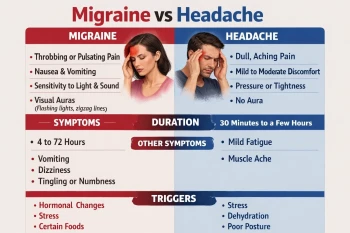
Can upper cervical adjustments be dangerous?
Many people who are new to chiropractic care have concerns about the safety of adjustments, especially when it comes to the neck region. Media reports occasionally highlight an injury or serious adverse event following an adjustment and label chiropractic as “unsafe” or “unscientific.” A critical review of the scientific literature will reveal that the risk of an adverse event following a neck adjustment is extremely low, making chiropractic care very safe and effective.
Upper cervical chiropractors are a subset of the profession that focuses specifically on correcting spinal related issues stemming from the upper neck. These procedures are differentiated from conventional chiropractic in a few ways, namely the attention to detail, precision, and minimal force used to correct the spine. Additionally, upper cervical adjustments by qualified upper cervical chiropractors do not twist, crack, or pop the spine – eliminating the risk of a more crude or generalized manipulation.
Where is the upper cervical spine?
The upper cervical spine is the topmost portion of the spine that supports the weight of the skull and provides a wide range of motion. The upper cervical spine is also known as the craniocervical junction and is made up of the occiput (base of the skull), atlas (first cervical segment), and axis (second cervical segment).
The upper cervical spine is the most freely movable region of the spine and maintains its alignment and structural integrity through a network of ligaments and soft connective tissues. This makes the upper cervical spine extremely mobile, yet prone to displacement when forces such as motor vehicle collisions, sports injuries, whiplash, and falls overwhelm the ligament strength that maintains alignment.
These displacements are prone to neurological irritation due to the proximity of the upper cervical spine to sensitive nerve structures such as the brain stem, cervical spinal cord, greater and lesser occipital nerves, and spinal meninges (membranes).
Spinal fluid flow can be negatively impacted by abnormal alignment in the upper cervical spine as it travels into and out of the skull.
What is an upper cervical chiropractor?
An upper cervical chiropractor is a Doctor of Chiropractic who’s the unique focus in this area of the spine. In the same way that an orthodontist is a dentist with a specialized set of skills, upper cervical chiropractors are differentiated from conventional chiropractic methods. Upper cervical chiropractors perform a thorough evaluation to assess the alignment and mechanics of the upper cervical spine.
This often involves a battery of testing including imaging (digital x-rays, CBCT, MRI, etc.) to measure the direction and magnitude of displacement that has occurred. Image-guided adjusting procedures are then used to make a corrective adjustment designed to have the maximum benefit with a minimal amount of effort. There are a variety of methods used to achieve a correction, and each upper cervical chiropractor will suit their approach to the needs of the patient, making upper cervical care truly patient-centered.
The Blair Upper Cervical Chiropractic Society is an organization that trains equips and supports upper cervical doctors who are providing conservative and quality care around the world. To find a Blair Upper Cervical Chiropractor near you, simply search our database and request a free consultation to learn more.
Does upper cervical chiropractic really work?
A common question that upper cervical doctors get is – will this work for my condition? Upper cervical chiropractic is not a treatment for a symptom or disease but is a focused approach that corrects upper cervical subluxation. Upper cervical subluxation is the term used to describe the combined structurally and functional dysfunction of the upper neck. Patients with upper cervical subluxation may have a variety of side effects including:
- Neck pain
- Nerve pain
- Vertigo
- Migraines/headaches
- Shoulder pain
- Low back pain
- Fibromyalgia
- Poor posture
- Post-concussion syndrome
- Meniere's Disease
…and more. Many individuals with these types of symptoms have found relief naturally through upper cervical care. It is not uncommon for upper cervical subluxation to be overlooked in managing these conditions, and testing is required to determine if upper cervical subluxation may be underlying these conditions for an individual.
For patients experiencing these types of conditions, upper cervical care can provide hope, healing, and answers!
What is the best chiropractic technique?
While there are a variety of upper cervical methods available, it is important to find the right approach for your situation. Here are a few key considerations when choosing an upper cervical doctor:
- Have they had success with your condition before?
- Are they certified through an upper cervical chiropractic organization?
- Do they perform a thorough evaluation (including imaging)?
The Blair Upper Cervical Chiropractic Technique is at the forefront of upper cervical chiropractic with its versatility, advanced imaging procedures, and reproducibility. This means that certified Blair Upper Cervical Chiropractors are highly qualified to provide conservative and effective care. Search the directory or request a consultation with a Blair Upper Cervical chiropractor to determine if you are a candidate for upper cervical care.
Is neck cracking by chiropractors dangerous?
Generalized spinal manipulation causing cracking and popping of the neck and is performed by conventional chiropractors, osteopathic doctors, some physical therapists, and certain medical doctors. These procedures are cruder in the application, and although the dangers are minimal, tend to be a “one-size-fits-all” approach. Individuals who are uncomfortable with these types of adjustments are candidates for upper cervical chiropractic care.
Can chiropractic neck adjustments cause a stroke?
To date, there is no scientific research that proves a cause-and-effect relationship between neck adjustments and stroke. There have been reported cases of cerebrovascular accidents following neck manipulation, but more research is needed to distinguish causation versus correlation.
Common side effects of stroke events in progress include neck pain and headaches, which are conditions that are routinely treated by chiropractors. If you experience intense headaches, rapid onset neck pain of high intensity or experience additional effects such as blurry vision, slurred speech, loss of consciousness, or decreased coordination, a qualified chiropractor should screen for a more serious condition prior to adjusting your neck.
Research on the effects of spinal manipulation has proven that a high amount of force and rotation is required to stretch the blood vessels in the neck beyond their normal elasticity. This means that upper cervical adjustments are extremely safe considering they do not rotate, twist, or aggressively move the position of the head or neck.
Most importantly, proper evaluation helps to identify situations that are amenable to chiropractic care and those that are not. For patients suffering from intense symptoms, chiropractic care still provides a safe and effective method of recovery once it is confirmed that your symptoms are not related to an issue with a blood vessel.
Can upper cervical chiropractic hurt your neck?
In short, there is no meaningful risk of injury to the neck with
upper cervical adjustments. While some patients might experience
muscle soreness following an adjustment, these sensations are very
commonly short-lived. Perhaps the greatest risk of injury to the
neck is the development of degenerative conditions over time, such
as spinal arthritis, degenerative disc disease, spinal stenosis,
etc.
These conditions develop over time as improper alignment and mechanical motion of the spine are left uncorrected. In the same way that teeth decay over time without proper care, the spinal structure can also decay over time without proper care.
To learn more about upper cervical chiropractic care and to determine if is a potential solution for you, reserve a complimentary consultation with a Blair Upper Cervical chiropractor.







Leave a comment